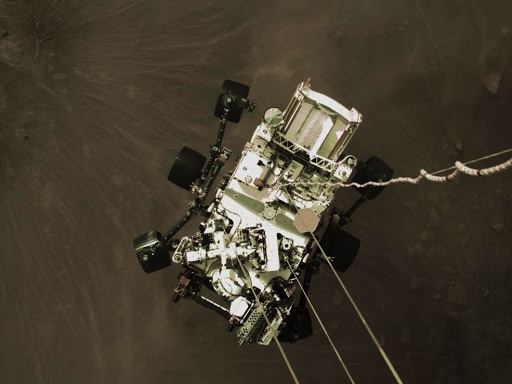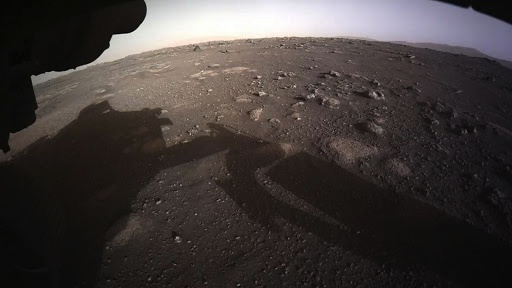CHLOE KOWALYK
Staff Writer
Three… two… one… touchdown!
Houston, we have landed!
Originally launched in July 2020, NASA’s newest Mars rover, named Perseverance, landed safely on Mars on Feb. 18.

Perseverance is equipped with cameras, a microphone and an assortment of tools that will help it measure the composition of rocks and soil. The rover will also be able to measure organic matter.
This is the first time that a Mars rover has a microphone, and it has already provided us with the first audio recording of Mars.
In an 18-second audio clip, listeners can hear a faint wind and the sound of the rover operating.
According to Dr. Michael Dunham, an assistant physics professor at SUNY Fredonia and the director of the Fredonia Observatory, “The sound recordings will help NASA engineers diagnose and fix mechanical problems, and they will help with studying the geology of Mars.”
The rover is equipped with a short laser that will blast rocks. The volume and pitch of the sound of the rocks breaking will help NASA study the composition of them.
In addition to the new microphone, Perseverance is also carrying a 4-pound helicopter named Ingenuity.
Ingenuity is the first helicopter that has been sent to Mars, but it currently relies on Perseverance for its source of power. In a few weeks, Ingenuity will drop from Perseverance and will be capable of flying off on its own.

Perseverance has several objectives for its mission on Mars. In order to continue past rover missions, Perseverance will look for signs of past life on Mars by examining rock samples.
Dunham says, “The various rover missions over time have confirmed that Mars was once a very wet place that was likely within our current definition of habitability.”
Perseverance will also be preparing for future manned missions. It will collect rock samples that need further studying and then place them in locations on Mars’ surface. This is so future missions can collect them and bring them back to Earth.
Much like Perseverance, Ingenuity has its own set of objectives to complete. Ingenuity will eventually separate from Perseverance and fly on multiple short missions.
The main goal of Ingenuity’s missions is to test if the technology it requires on Mars is feasible. If the technology is successful, missions in the future will use helicopters like Ingenuity to aid in navigation.
Currently, rovers need to drive very slowly to avoid dangers. Since the drivers are on Earth, there is a 5 to 20 minute delay when communicating with the rovers on Mars. This means that the captures from the rover that drivers see are 20 minutes old.
This is where Ingenuity comes in.
Ingenuity’s goal is to test the technology that will “use drones to fly ahead and take high-resolution pictures of the terrain in front of the rover. If this works, future missions will be able to drive much faster and cover much more ground,” Dunham says.
Overall, the mission is expected to last at least two Earth years, which is approximately one year on Mars.
Dunham says that “as long as the rover works and NASA funding is available, Perseverance will continue to study Mars.”
Many students here at Fredonia have been buzzing about the recent landing.
Hunter Halterman, a freshman at SUNY Fredonia, was especially excited about the landing. “I was actually watching the livestream… it was so cool. Even though the HD picture doesn’t look like much, it’s so cool to see,” he says.

Halterman is referring to one of the many HD photos Perseverance has sent back from Mars. Many of the images are zoomed in or are panoramas of the Red Planet.
Another student, Colin Arnett, expresses his interest in the landing. He has watched many videos about how Perseverance was made and the livestream of the landing from NASA.
“The fact that Perseverance is powered through nuclear batteries is so cool,” Arnett says. He is referring to Perseverance’s power source, a Multi-Mission Radioisotope Thermoelectric Generator, or MMRTG for short.
The battery is powered by plutonium-238 and has a lifespan of around 14 years.
Perseverance and Ingenuity have only just begun their exploration of Mars, so strap in— it’s about to be an exciting ride.
